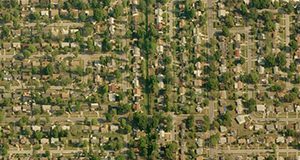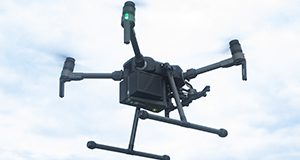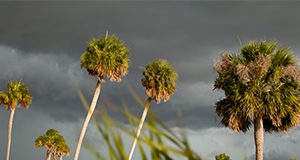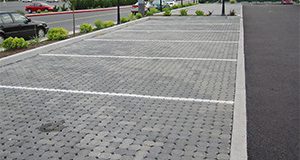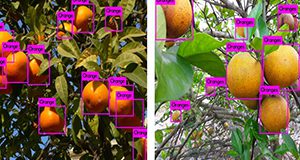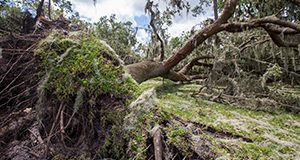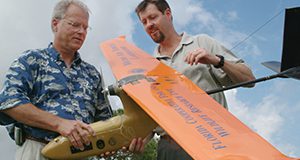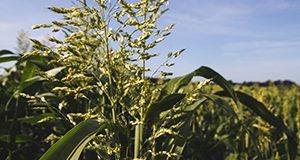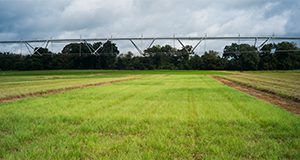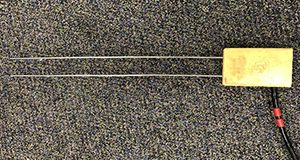Interest in understanding water use and irrigation costs has risen in recent years. This case study is a 5-page evaluation of water use and associated costs for residential landscape irrigation in Osceola County and Orange County, Florida. Homeowners in central Florida can use the results to assess their water consumption and bills in relation to similar homes in the area. Written by Nick Taylor, Tricia Kyzar, Pierce Jones, and Kaitlin O. Robb Price, and published by the UF/IFAS Department of Agricultural and Biological Engineering, December 2019.
https://edis.ifas.ufl.edu/ae536
Tag: Agricultural and Biological Engineering Department
Preflight and Flight Instructions on the Use of Unmanned Aerial Vehicles (UAVs) for Agricultural Applications
This 5-page document provides guidance on the appropriate use of unmanned aerial vehicles (UAVs) for agricultural applications in Florida. It contains step-by-step instructions for preparing a UAV for flight, creating a mission path (using flight mission planning apps), and collecting UAV-based data. Written by Sri Charan Kakarla, Leon De Morais Nunes, and Yiannis Ampatzidis, and published by the UF/IFAS Department of Agricultural and Biological Engineering, November 2019.
http://edis.ifas.ufl.edu/ae535
Postflight Data Processing Instructions on the Use of Unmanned Aerial Vehicles (UAVs) for Agricultural Applications
Remote sensing applications for agriculture often require periodically collected high-resolution data, which are difficult to obtain by manned flights or satellite imagery. This 6-page document provides guidance on the use of post-processing software to visualize data collected by unmanned aerial vehicles (UAVs) for agricultural applications. It provides step-by-step instructions for using the data collected from a UAV flight to create several types of maps and indices. Written by Sri Charan Kakarla and Yiannis Ampatzidis, and published by the UF/IFAS Department of Agricultural and Biological Engineering, October 2019.
http://edis.ifas.ufl.edu/ae533
Estasyon Meteyo nan Jaden: Gid pou Enstalasyon ak Antretyen
Kondisyon meteyo yo ka jwe yon gwo wòl nan siksè oswa echèk aktivite agrikòl yo. Kiltivatè yo rekonèt sa e se sak fè yo toujou swiv bilten ak previzyon meteyo pou ka ede yo pran desizyon nan sa ki gen pou wè ak irigasyon, pwoteksyon kont fredi ansanm ak anpil lòt desizyon. This new 4-page publication is the Haitian Creole version of EDIS document AE532, Guidelines for Establishing and Maintaining Farm-Based Weather Stations in Haiti. Written by Caroline G. Staub, William Eisenstadt, William Blanc, Nicole Monval, Clyde W. Fraisse, William Lusher, George Braun, and Lee Staudt, and published by the UF/IFAS Department of Agricultural and Biological Engineering, May 2019.
http://edis.ifas.ufl.edu/ae531
Guidelines for Establishing and Maintaining Farm-Based Weather Stations in Haiti
Weather can significantly influence the success or failure of agricultural enterprises. Monitoring weather conditions can provide critical decision-making information. This new 4-page publication provides Haitian farmers with basic guidelines for installing and maintaining an on-farm weather station. Written by Caroline G. Staub, William Eisenstadt, William Blanc, Nicole Monval, Clyde W. Fraisse, William Lusher, George Braun, and Lee Staudt, and published by the UF/IFAS Department of Agricultural and Biological Engineering, May 2019.
http://edis.ifas.ufl.edu/ae532
Permeable Pavement Systems: Technical Considerations
Permeable pavement systems are Green Stormwater Infrastructure practices that can reduce runoff while supporting vehicle and pedestrian traffic. This new 8-page document provides technical details of permeable pavement systems, such as application, system elements, design, installation, operation, maintenance, crediting, and costs, in order to inform planners, engineers, landscape architects, local government officials, and other professionals in the built environment about the considerations for implementing and maintaining permeable pavements. Written by E. Bean, M. Clark, and B. Larson, and published by the UF/IFAS Department of Agricultural and Biological Engineering, April 2019.
http://edis.ifas.ufl.edu/ae530
Applications of Artificial Intelligence for Precision Agriculture
Technological advances in computer vision, mechatronics, artificial intelligence, and machine learning have enabled the development and implementation of remote sensing technologies for plant, weed, pest, and disease identification and management. They provide a unique opportunity for the development of intelligent agricultural systems for precision applications. This 5-page document discusses the concepts of artificial intelligence (AI) and machine learning and presents several examples to demonstrate the application of AI in agriculture. Written by Yiannis Ampatzidis, and published by the UF/IFAS Department of Agricultural and Biological Engineering, December 2018.
http://edis.ifas.ufl.edu/ae529
Hurricane Impacts on Florida's Agriculture and Natural Resources
Hurricanes are capable of affecting almost everything in their paths. Their strong winds and heavy rains can directly impact both inland and coastal areas in short periods that usually last about a day. This new 10-page document reviews basic facts about hurricanes and their effects in Florida and discusses ways they might affect Florida's agriculture and natural resources. Written by Young Gu Her, Ashley Smyth, Pamela Fletcher, Elias Bassil, Ulrich Stingl, Zachary Brym, and Jiangxiao Qiu, and published by the UF/IFAS Department of Agricultural and Biological Engineering, October 2018.
http://edis.ifas.ufl.edu/ae528
Lightning Safety for Florida Agriculture Workers
Lightning is a common occurrence in Florida. Although lightning kills only about 10% of the people it strikes, it can cause physical and mental complications that victims must face for the rest of their lives. Agriculture workers need to have a good working knowledge of lightning, its effects, and ways to protect others and themselves from this potentially life-threatening hazard. This new 4-page document discusses types of lightning, outdoor safety for farm workers, lightning medical aid, and regulations for employers. Written by Shawn Steed and Alicia Whidden, and published by the UF/IFAS Department of Agricultural and Biological Engineering, October 2018.
http://edis.ifas.ufl.edu/ae526
Instructions on the Use of Unmanned Aerial Vehicles (UAVs)
All research and commercial activities involving the use of UAVs must be conducted in compliance with applicable federal and state laws, statutes, and regulations. This new 5-page document provides guidance on the appropriate use of unmanned aerial vehicles (UAVs) or unmanned aircraft systems (UAS) in Florida. Written by Sri Charan Kakarla and Yiannis Ampatzidis, and published by the UF/IFAS Department of Agricultural and Biological Engineering, October 2018.
http://edis.ifas.ufl.edu/ae527
Degree-Days: Growing, Heating, and Cooling
How much and when it rains, freezes, and thaws can make the difference between boom and bust for a year's crop. However, temperature can predict more than boom or bust. Atmospheric temperature can predict the growth rates of many plants. For this reason, growers use a concept called growing degree-days (GDD), sometimes called heat units. This 5-page document discusses growing degree-days, use of the AgroClimate website to track and forecast GDD accumulation, heating and cooling degree-days, and methods for calculating HDD, CDD, and GDD. Written by Clyde W. Fraisse and Silvana V. Paula-Moraes, and published by the UF/IFAS Department of Agricultural and Biological Engineering, revised December 2010 and April 2018.
http://edis.ifas.ufl.edu/ae428
AgroClimate Crop Season Planning Tool: Reducing the Risk of Extreme Weather Events During Key Stages of Crop Development
This 5-page publication details a new tool available to growers and Extension professionals to manage risks related to climate during seasonal planning stages. The Crop Season Planning tool is a climate-based tool that enables growers to plan planting strategies that will minimize risk to climate extremes based on historical climate data at their location. Written by Caroline G. Staub, Daniel Perondi, Diego Noleto Luz Pequeno, Patrick Troy, Michael J. Mulvaney, Calvin Perry, Brian Hayes, Willingthon Pavan, and Clyde W. Fraisse, and published by the UF/IFAS Department of Agricultural and Biological Engineering, March 2018.
http://edis.ifas.ufl.edu/ae525
How Likely Is a 100-Year Rainfall Event During the Next Ten Years?
This 4-page fact sheet describes proper interpretation of rainfall event probabilities and recurrence intervals, particularly as they are used by engineers and water resources managers in the design and construction of hydraulic structures, such as dams, levees, and canals. This article focuses on rainfall, but its explanations and concepts can be applied to other extreme hydrologic phenomena such as flood and drought. Written by Young Gu Her, William Lusher, and Kati Migliaccio, and published by the UF/IFAS Department of Agricultural and Biological Engineering, March 2018.
http://edis.ifas.ufl.edu/ae523
Plant and Pest Diagnosis and Identification Through DDIS
Pest identification and diagnosis can be difficult and often require consultation with a specialist. Extension county faculty, state specialists, and faculty of the UF/IFAS Office of Information Technology developed the Distance Diagnostic and Identification System (DDIS), which allows users to submit digital images obtained in the field or after delivery to a local Extension office for rapid diagnosis and identification of pest insects, weeds, diseases, and animals. This 4-page document discusses typical DDIS hardware and camera, the DDIS process, sample types, user roles, DDIS for Extension clientele, and DDIS Mobile. Written by J. Xin, L. Buss, C. Harmon, P. Vergot III, M. Frank, and W. Lester, and published by the UF/IFAS Department of Agricultural and Biological Engineering, revised March 2018.
http://edis.ifas.ufl.edu/ae225
What Is a Wireless Sensor Network?
A wireless sensor network (WSN) is a system designed to remotely monitor and control a specific phenomenon or event. This new 2-page fact sheet discusses the advantages that the WSN has over traditional stand-alone sensors and controllers, power consumption and conservation, and WSN technologies. Written by Clyde Fraisse, Janise McNair, and Thiago Borba Onofre, and published by the UF/IFAS Department of Agricultural and Biological Engineering, January 2018.
http://edis.ifas.ufl.edu/ae521
Microirrigation for Home Landscapes
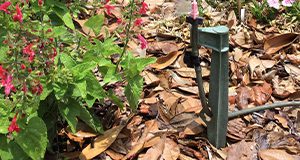 Microirrigation is a way to water plants using low pressure and low flowrates (usually 15 psi or less and 60 gph or less). Microirrigation systems can be easy to install above, on, or below the soil or mulch in landscape beds and are inexpensive to purchase. This 3-page fact sheet discusses types of microirrigation systems, benefits, design and installation, and maintenance. Written by Anne Yasalonis and Michael Dukes, and published by the UF/IFAS Department of Agricultural and Biological Engineering, October 2017.
Microirrigation is a way to water plants using low pressure and low flowrates (usually 15 psi or less and 60 gph or less). Microirrigation systems can be easy to install above, on, or below the soil or mulch in landscape beds and are inexpensive to purchase. This 3-page fact sheet discusses types of microirrigation systems, benefits, design and installation, and maintenance. Written by Anne Yasalonis and Michael Dukes, and published by the UF/IFAS Department of Agricultural and Biological Engineering, October 2017.
http://edis.ifas.ufl.edu/ae524
What Is the ENSO Climatology Tool?
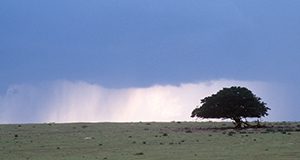 On a global scale, periodic anomalies in sea surface temperatures coupled with shifts in atmospheric pressure and winds, such as those associated with the El Niño Southern Oscillation (ENSO), can have profound impacts on weather conditions. ENSO affects atmospheric circulation patterns well into the midlatitudes and is the leading driver of seasonal climate variability in the United States. Tremendous advances have been made in predicting the occurrence of ENSO events with confidence three to six months in advance. This 5-page fact sheet discusses the ENSO climatology tool as well as possible challenges. Written by Caroline Staub, Clyde Fraisse, Eduardo Gelcer, and Daniel Dourte, and published by the UF Department of Agricultural and Biological Engineering, March 2017.
On a global scale, periodic anomalies in sea surface temperatures coupled with shifts in atmospheric pressure and winds, such as those associated with the El Niño Southern Oscillation (ENSO), can have profound impacts on weather conditions. ENSO affects atmospheric circulation patterns well into the midlatitudes and is the leading driver of seasonal climate variability in the United States. Tremendous advances have been made in predicting the occurrence of ENSO events with confidence three to six months in advance. This 5-page fact sheet discusses the ENSO climatology tool as well as possible challenges. Written by Caroline Staub, Clyde Fraisse, Eduardo Gelcer, and Daniel Dourte, and published by the UF Department of Agricultural and Biological Engineering, March 2017.
http://edis.ifas.ufl.edu/ae522
Yield Mapping Hardware Components for Grains and Cotton Using On-the-Go Monitoring Systems
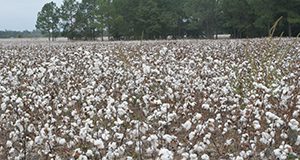 This 12-page fact sheet discusses yield mapping benefits, grain yield flow sensors, grain moisture sensors, cotton yield flow sensors, differential GNSS receivers, ground speed sensors, header position sensors, computer displays, yield calculation and calibration, and costs of yield mapping hardware components. Written by Rebecca Barocco, Won Suk Lee, and Garret Hortman, and published by the UF Department of Agricultural and Biological Engineering, February 2017.
This 12-page fact sheet discusses yield mapping benefits, grain yield flow sensors, grain moisture sensors, cotton yield flow sensors, differential GNSS receivers, ground speed sensors, header position sensors, computer displays, yield calculation and calibration, and costs of yield mapping hardware components. Written by Rebecca Barocco, Won Suk Lee, and Garret Hortman, and published by the UF Department of Agricultural and Biological Engineering, February 2017.
http://edis.ifas.ufl.edu/ae518
Calibrating Time Domain Reflectometers for Soil Moisture Measurements in Sandy Soils
The UF/IFAS Plant Science Research and Education Unit (PSREU) in Citra, FL developed an in-laboratory calibration protocol for CS616 TDR sensors for sandy soils, which are typical of north central Florida. This new 7-page fact sheet discusses the reflectometer, field site, calibration protocol, and calibration coefficients. Written by Tara Bongiovanni, Pang-Wei Liu, Daniel Preston, Johanna Montanez, Courtnay Cardozo, Steven Feagle, and Jasmeet Judge, and published by the UF Department of Agricultural and Biological Engineering, February 2017.
http://edis.ifas.ufl.edu/ae519
Florida Rainfall Data Sources and Types
This new 5-page document introduces the sources, providers, and types of rainfall data available to Florida researchers and residents to promote understanding of the rainfall data and their application in studies and daily life. Written by Meijing Zhang, Young Gu Her, Kati Migliaccio, and Clyde Fraisse, and published by the UF Department of Agricultural and Biological Engineering, January 2017.
http://edis.ifas.ufl.edu/ae517
